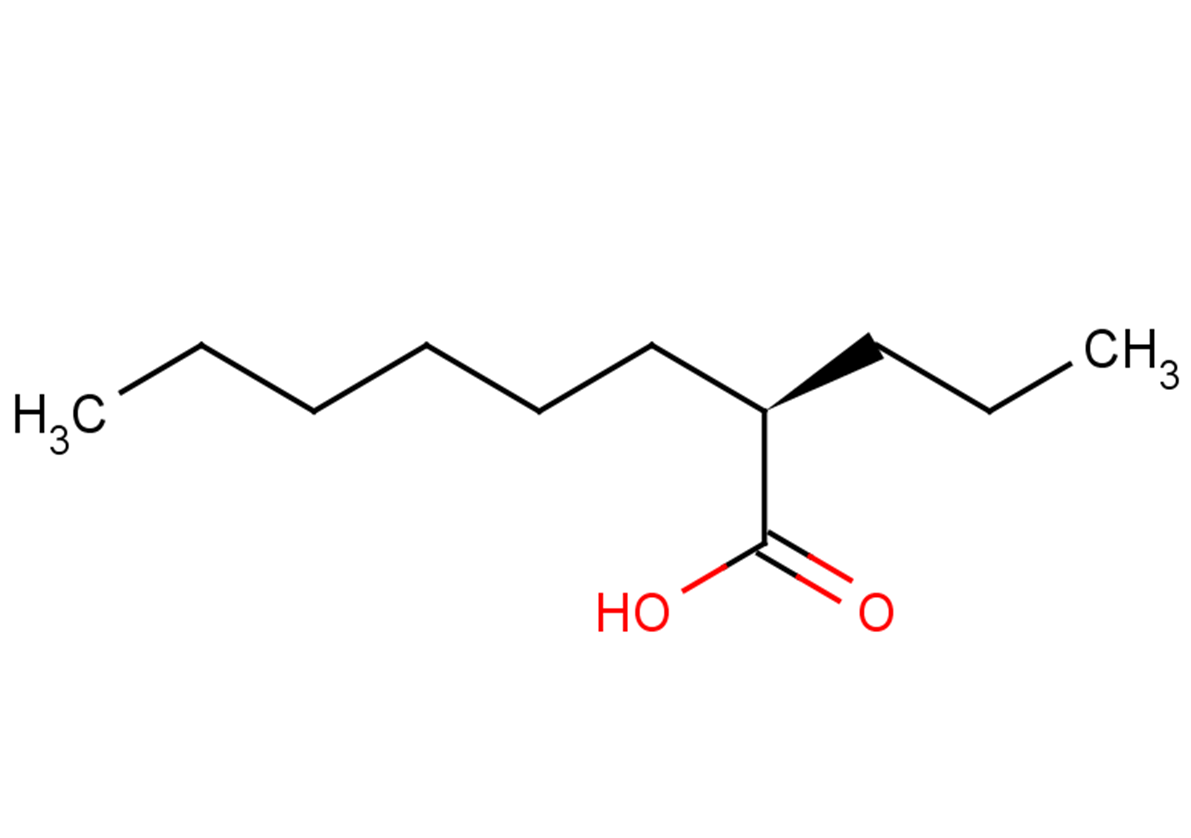
Arundic Acid
CAS No. 185517-21-9
Arundic Acid( ONO 2506 | (R)-2-Propyloctanoic acid )
Catalog No. M23845 CAS No. 185517-21-9
Arundic Acid is an astrocyte-modulating agent, delays the expansion of cerebral infarcts by modulating the activation of astrocytes through inhibition of S-100β synthesis.
Purity : >98% (HPLC)
 COA
COA
 Datasheet
Datasheet
 HNMR
HNMR
 HPLC
HPLC
 MSDS
MSDS
 Handing Instructions
Handing Instructions
| Size | Price / USD | Stock | Quantity |
| 2MG | 35 | In Stock |


|
| 5MG | 56 | In Stock |


|
| 10MG | 87 | In Stock |


|
| 100MG | Get Quote | In Stock |


|
| 200MG | Get Quote | In Stock |


|
| 500MG | Get Quote | In Stock |


|
| 1G | Get Quote | In Stock |


|
Biological Information
-
Product NameArundic Acid
-
NoteResearch use only, not for human use.
-
Brief DescriptionArundic Acid is an astrocyte-modulating agent, delays the expansion of cerebral infarcts by modulating the activation of astrocytes through inhibition of S-100β synthesis.
-
DescriptionArundic Acid is an astrocyte-modulating agent, delays the expansion of cerebral infarcts by modulating the activation of astrocytes through inhibition of S-100β synthesis.
-
In Vitro——
-
In Vivo——
-
SynonymsONO 2506 | (R)-2-Propyloctanoic acid
-
PathwayOthers
-
TargetOther Targets
-
RecptorOthers
-
Research Area——
-
Indication——
Chemical Information
-
CAS Number185517-21-9
-
Formula Weight186.29
-
Molecular FormulaC11H22O2
-
Purity>98% (HPLC)
-
SolubilityDMSO:150 mg/mL (805.20 mM; Need ultrasonic)
-
SMILESCCCCCC[C@H](C(=O)O)CCC
-
Chemical Name——
Shipping & Storage Information
-
Storage(-20℃)
-
ShippingWith Ice Pack
-
Stability≥ 2 years
Reference
1.Tomoyuki Hasegawa, et al. Process Development of ONO-2506:? A Therapeutic Agent for Stroke and Alzheimer's Disease. Org. Process Res. Dev.200372168-171.
molnova catalog



related products
-
CMP-5 2HCl
CMP-5 2HCl is a anthelmintic agent. CMP-5 2HCl shows EC100 of 5μM against H. contortus in vitro.
-
Astragaloside II
Astragaloside II is an effective MDR reversal agent and may be a potential adjunctive agent for hepatic cancer chemotherapy.
-
3'4'-dihydro-3'-hydr...
3'4'-dihydro-3'-hydroxy-Xanthyletin is a natural product from Angelica gigas.



 Cart
Cart
 sales@molnova.com
sales@molnova.com


